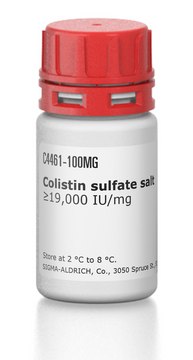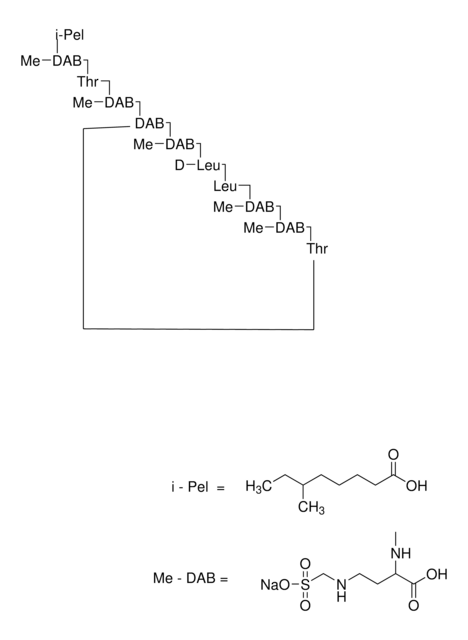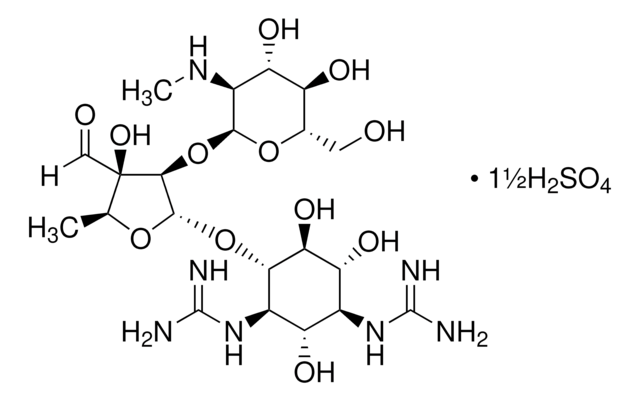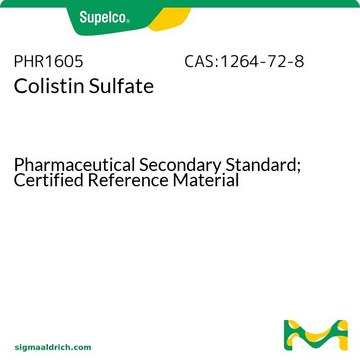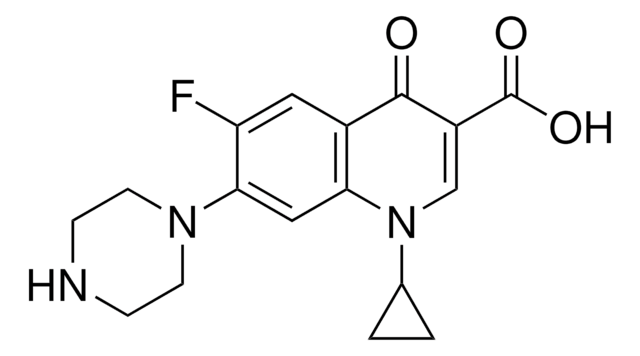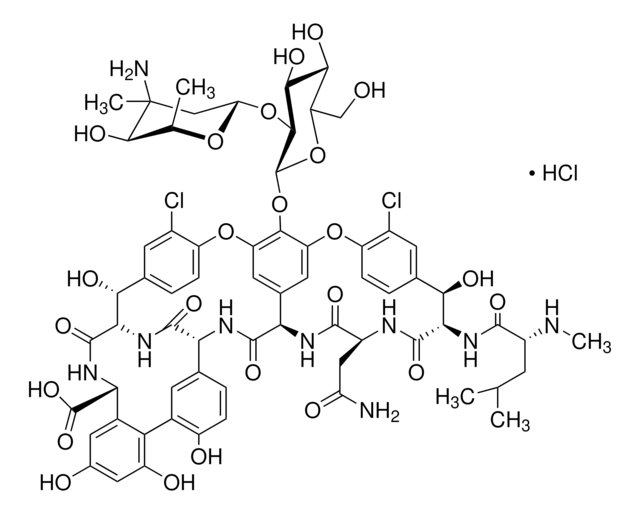27655
Colistin sodium methanesulfonate
from Bacillus colistinus
Synonym(s):
Colimycin sodium methanesulfonate, Methanesulfonic acid derivative of Polymyxin E, Polymyxin E sodium methanesulfonate
About This Item
Recommended Products
biological source
Bacillus colistinus
Quality Level
form
powder or crystals
ign. residue
~20%
loss
≤5.0% loss on drying
color
white to off-white
pH
6.5-8.5
antibiotic activity spectrum
Gram-negative bacteria
Mode of action
cell membrane | interferes
storage temp.
2-8°C
SMILES string
[Na+].[Na+].[Na+].[Na+].[Na+].CS([O-])(=O)=O.CS([O-])(=O)=O.CS([O-])(=O)=O.CS([O-])(=O)=O.CS([O-])(=O)=O.CCC(C)CCCCC(=O)N[C@@H](CCN)C(=O)N[C@@H](C(C)O)C(=O)N[C@@H](CCN)C(=O)N[C@H]1CCNC(=O)[C@@H](NC(=O)[C@H](CCN)NC(=O)[C@@H](CCN)NC(=O)[C@H](CC(C)C)NC(=O)[C@@H](CC(C)C)NC(=O)[C@H](CCN)NC1=O)C(C)O
InChI
1S/C53H100N16O13.5CH4O3S.5Na/c1-9-30(6)12-10-11-13-41(72)60-33(14-20-54)48(77)69-43(32(8)71)53(82)65-36(17-23-57)45(74)64-38-19-25-59-52(81)42(31(7)70)68-49(78)37(18-24-58)62-44(73)34(15-21-55)63-50(79)39(26-28(2)3)67-51(80)40(27-29(4)5)66-46(75)35(16-22-56)61-47(38)76;5*1-5(2,3)4;;;;;/h28-40,42-43,70-71H,9-27,54-58H2,1-8H3,(H,59,81)(H,60,72)(H,61,76)(H,62,73)(H,63,79)(H,64,74)(H,65,82)(H,66,75)(H,67,80)(H,68,78)(H,69,77);5*1H3,(H,2,3,4);;;;;/q;;;;;;5*+1/p-5/t30?,31-,32-,33+,34-,35+,36+,37+,38+,39+,40-,42+,43+;;;;;;;;;;/m1........../s1
InChI key
WSDSONZFNWDYGZ-BKFDUBCBSA-I
Looking for similar products? Visit Product Comparison Guide
Related Categories
General description
Application
Biochem/physiol Actions
Antimicrobial spectrum: Gram-negative bacteria.
Packaging
Other Notes
Storage Class Code
11 - Combustible Solids
WGK
WGK 3
Flash Point(F)
Not applicable
Flash Point(C)
Not applicable
Personal Protective Equipment
Regulatory Information
Choose from one of the most recent versions:
Certificates of Analysis (COA)
Don't see the Right Version?
If you require a particular version, you can look up a specific certificate by the Lot or Batch number.
Already Own This Product?
Find documentation for the products that you have recently purchased in the Document Library.
Our team of scientists has experience in all areas of research including Life Science, Material Science, Chemical Synthesis, Chromatography, Analytical and many others.
Contact Technical Service